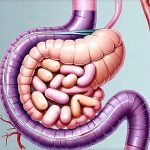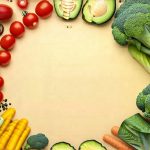Gas, bloating, and abdominal cramps are incredibly common digestive complaints, affecting a large percentage of the population at some point in their lives. Often dismissed as minor inconveniences, these symptoms can significantly impact quality of life, causing discomfort that ranges from mildly annoying to debilitatingly painful. Many factors contribute to these issues, including dietary choices, stress levels, underlying health conditions, and – increasingly recognized – the state of our gut microbiome. The intricate ecosystem of trillions of microorganisms residing in our digestive tract plays a vital role in how we digest food, absorb nutrients, and even regulate inflammation. An imbalance within this microbiome, known as dysbiosis, can lead to increased gas production, altered motility (how quickly food moves through the system), and heightened sensitivity, all contributing to those unwelcome symptoms.
Traditional approaches often focus on eliminating specific foods believed to be problematic – a process that can be restrictive and sometimes ineffective without understanding the root cause. However, shifting our focus towards nourishing a healthy microbiome while making thoughtful snack choices offers a more sustainable and holistic approach. This isn’t about deprivation; it’s about selecting snacks that support digestive health and minimize triggers. It is about acknowledging that what we eat not only fuels us but also fuels the diverse community living within us, influencing how well our digestive system functions overall. The goal is to find satisfying snack options that work with your body, rather than against it. Consider starting with best breakfast options to begin the day right.
Understanding the Gut-Snack Connection
The relationship between our snacks and gut health is surprisingly complex. Many conventional snack foods are laden with ingredients that can disrupt the microbiome: refined sugars, artificial sweeteners, highly processed oils, and emulsifiers all have been linked to negative changes in gut bacteria composition. These alterations can favor the growth of gas-producing microbes or reduce populations of beneficial bacteria crucial for healthy digestion. For example, excessive sugar feeds certain bacteria that produce hydrogen as a byproduct of fermentation – leading to increased flatulence and bloating. Similarly, artificial sweeteners aren’t always inert; some are fermented by gut bacteria, creating gas, while others may directly harm the microbiome’s diversity.
Furthermore, the speed at which we consume snacks can play a role. Eating too quickly often leads to swallowing excess air, contributing to bloating. The type of fiber in our snacks also matters. While fiber is generally beneficial, certain types (like those found in beans or cruciferous vegetables) are more likely to produce gas during digestion if your gut microbiome isn’t accustomed to them. It’s important to introduce these slowly and strategically. The key takeaway here isn’t necessarily avoiding all potentially problematic ingredients but rather being mindful of portion sizes, eating habits, and the overall composition of our snack choices. You might also find anti-nausea diet strategies helpful for managing symptoms.
Finally, individual tolerance varies greatly. What triggers symptoms in one person might not affect another. This is due to differences in microbiome composition, digestive enzyme production, and gut sensitivity levels. Personalization is therefore crucial when choosing snacks for improved gut health. Paying attention to how your body responds to different foods is paramount.
Snack Categories & Microbiome Support
When selecting snacks, consider prioritizing options that actively support a healthy microbiome. This means focusing on whole, unprocessed foods rich in prebiotic fibers – the food source for beneficial bacteria – and incorporating fermented foods that introduce live cultures directly into the gut. Here’s a breakdown of snack categories with microbiome-friendly choices:
- Fruits: Berries (blueberries, raspberries), bananas (slightly green are best as they contain more resistant starch), apples (with skin) provide fiber and polyphenols which support beneficial bacteria. Avoid excessive fructose from juices or dried fruits.
- Vegetables: Carrot sticks with hummus, cucumber slices with guacamole, celery sticks with almond butter offer fiber and healthy fats. Fermented vegetables like kimchi or sauerkraut in small portions can be a powerful probiotic boost.
- Nuts & Seeds: Almonds, walnuts, chia seeds, flaxseeds provide fiber, healthy fats, and micronutrients. Be mindful of portion sizes due to their higher calorie content. Soaking nuts overnight can improve digestibility for some people.
- Whole Grains (in moderation): Oatmeal (prepared with water), quinoa puffs, or a small serving of whole-grain crackers paired with avocado provide sustained energy and fiber.
- Dairy/Alternatives: Plain yogurt (Greek or regular) with added berries; kefir (fermented milk drink); coconut yogurt (unsweetened) are excellent sources of probiotics. Consider nutrition support if you have underlying digestive issues.
It’s also important to consider how you combine foods. Pairing a carbohydrate source with a protein or healthy fat can slow down digestion and reduce gas production. For example, an apple slice with almond butter is often better tolerated than an apple alone. Thinking about cooking oils used in preparation can also be beneficial.
Mindful Snacking Strategies
Beyond the specific food choices, adopting mindful snacking habits can significantly improve digestive comfort. This isn’t about restrictive dieting; it’s about being present during meal times and paying attention to your body’s signals. Here are some strategies:
- Eat Slowly: Take smaller bites, chew thoroughly, and savor each mouthful. This aids digestion and reduces air swallowing.
- Portion Control: Avoid overeating, even with healthy snacks. Smaller, more frequent snacking can be easier on the digestive system than large portions.
- Hydrate Regularly: Drinking water throughout the day helps keep food moving through the digestive tract and prevents constipation.
- Food Diary: Keep a simple food diary to track what you eat and how your body responds. This can help identify personal triggers and sensitivities. Note not just what you ate, but also how you felt afterward (bloated, gassy, comfortable).
- Stress Management: Stress can significantly impact digestion. Practice relaxation techniques like deep breathing or meditation to reduce stress levels and improve gut function.
Building a Personalized Snack Plan
Creating a snack plan tailored to your individual needs is the ultimate goal. Start by identifying potential trigger foods based on your food diary. Then, gradually incorporate microbiome-supporting snacks into your diet, one at a time. Observe how your body responds and adjust accordingly. Here’s a step-by-step approach:
- Elimination Phase (if needed): Temporarily remove common triggers like excessive sugar, artificial sweeteners, or highly processed foods for 2-3 weeks to see if symptoms improve.
- Reintroduction Phase: Slowly reintroduce potential trigger foods one at a time, monitoring your body’s response closely. This helps identify specific sensitivities.
- Focus on Prebiotics & Probiotics: Prioritize snacks rich in prebiotic fibers and/or containing live cultures. Experiment with different options to find what works best for you.
- Listen To Your Body: This is the most important step! Don’t force yourself to eat something that makes you feel uncomfortable, even if it’s considered “healthy.” For example, understanding dietary fiber sources can help guide your choices.
Remember, improving gut health is a journey, not a destination. Be patient with yourself, experiment with different options, and focus on creating sustainable habits that support your overall well-being. It’s about finding the balance between delicious snacks and digestive comfort – a balance that allows you to enjoy food without fear of discomfort. Also consider holiday eating tips during times when dietary habits change.


















